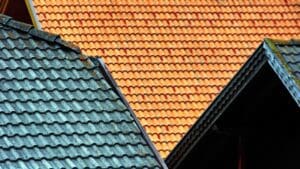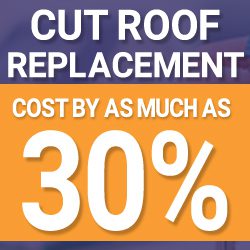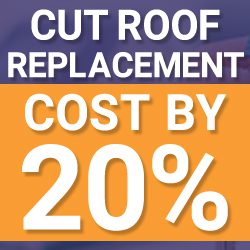
How to Choose the Best Roofing Material in 2023
In 2023, homeowners are presented with a vast array of roofing materials, each boasting its unique set of advantages, aesthetics, and functional attributes. As the roof acts as the first line of defense against natural elements and plays a pivotal role in a home’s curb appeal, making the right choice is more crucial than ever. Here’s a comprehensive guide to assist you in navigating the options and choosing the best roofing material for your home.
COMPARE QUOTESFactors to Consider When Selecting Roofing Materials
Before delving into the specific materials, it’s essential to understand the factors that will influence your decision:
- Climate and Environment: The region where you reside will play a significant role. Materials that hold up well in snowy conditions might not be suitable for areas prone to wildfires or hurricanes.
- Durability and Lifespan: How long do you expect the roofing to last? Some materials have longer lifespans than others.
- Aesthetics: How do you want your roof to look? Your choice should blend well with the overall architecture and design of your home.
- Maintenance: Some roofs require more upkeep than others. Consider how much time and money you’re willing to spend on maintenance.
- Cost: Budget constraints are always a factor. It’s essential to find a balance between cost and quality.
- Eco-friendliness: With the rising emphasis on sustainability, many homeowners prioritize environmentally friendly roofing materials.

Popular Roofing Materials in 2023
1. Asphalt Shingles
- Pros: Asphalt shingles are among the most common roofing materials due to their affordability, ease of installation, and a wide range of colors and styles.
- Cons: They have a shorter lifespan compared to some other options and may not be the most eco-friendly choice.
- Best for: Homeowners looking for a cost-effective solution and a traditional look.
2. Metal Roofing
- Pros: Metal roofs can last up to 50 years or more and are resistant to fire, rot, and insects. They reflect sunlight, reducing the need for air conditioning in hot climates.
- Cons: They can be noisier during rain and hail and might dent if walked upon.
- Best for: Those looking for durability, especially in areas prone to wildfires.
3. Slate Tiles
- Pros: Slate roofs are incredibly durable, lasting over a century. They’re also fire-resistant and offer a distinct, elegant appearance.
- Cons: They’re heavy, requiring a robust support structure, and are on the pricier side.
- Best for: Historic or upscale homes and those looking for longevity.
4. Clay and Concrete Tiles
- Pros: These tiles are non-combustible and last a long time. They come in various colors and styles, offering a Mediterranean or Southwestern flair.
- Cons: Like slate, they’re heavy and may require additional framing.
- Best for: Homes in hotter climates, as they do an excellent job of reflecting sunlight.
5. Wood Shingles and Shakes
- Pros: Wood offers a rustic and natural look, aging beautifully over time. It provides decent insulation.
- Cons: Without proper maintenance, wood is susceptible to rot, mold, and insects. It’s not the best option for fire-prone areas unless treated with fire retardants.
- Best for: Those aiming for a natural aesthetic in humid climates.
6. Green Roofs
- Pros: Green roofs are covered with plants, improving air quality, and managing stormwater. They provide excellent insulation and extend the roof’s lifespan.
- Cons: They can be heavy, require a robust structure, and necessitate more maintenance than traditional roofs.
- Best for: Eco-conscious homeowners and urban areas looking to combat the heat island effect.
7. Synthetic Roofing
- Pros: Made from polymers or a combination of plastic and rubber, synthetic roofing mimics materials like slate or wood without the downsides. They’re lightweight, durable, and more affordable.
- Cons: Their long-term durability is still being gauged as they are relatively newer to the market.
- Best for: Those who want the look of pricier materials without the associated cost or maintenance.


Choosing the right roofing material is a significant decision that affects your home’s longevity, appearance, and energy efficiency. In 2023, the emphasis is not just on functionality but also on sustainability and aesthetics. Consult with roofing professionals, consider the specific needs and constraints of your region and home, and weigh the pros and cons of each material before making a decision. A well-chosen roof is an investment that pays off in protection, appeal, and peace of mind.
How Much Does It Cost to Replace a Roof?
Replacing a roof is a significant investment and one of the more substantial costs a homeowner might face. Numerous factors influence the final price tag, including the type of roofing material selected, the size and complexity of the roof, labor costs in the area, and any additional features or services required. Here, we break down the average costs of roofing materials and labor to give you a clearer picture of what to expect when budgeting for a roof replacement in 2023.
Average Cost of Roofing Materials
Remember, prices can vary based on region, brand, quality, and any additional features (like energy efficiency or impact resistance). Here’s a rough estimate per square foot for some popular roofing materials:
- Asphalt Shingles: $1.50 – $5.50 per sq. ft.
- Lifespan: 15-30 years
- Metal Roofing: $5.00 – $14.00 per sq. ft.
- Lifespan: 40-70 years
- Slate Tiles: $10.00 – $20.00 per sq. ft.
- Lifespan: 50-100 years
- Clay and Concrete Tiles: $8.00 – $15.00 per sq. ft.
- Lifespan: 30-50 years
- Wood Shingles and Shakes: $4.50 – $9.00 per sq. ft.
- Lifespan: 20-40 years
- Green Roofs: $10.00 – $25.00 per sq. ft., considering the additional features like drainage and plant selection.
- Lifespan: 30-50 years with proper maintenance
- Synthetic Roofing: $5.00 – $12.00 per sq. ft.
- Lifespan: 30-50 years, though still being established.
When considering these prices, remember that “per square foot” refers to the coverage area of the roof, not the living area of the home. Roofs typically have a larger surface area than the home’s footprint due to the pitch and design.



Labor Costs
Labor can be a significant portion of your roofing cost, and it can fluctuate based on:
- Location: Labor costs differ from state to state, even from city to city. Urban areas often have higher rates than rural ones.
- Complexity: A roof with multiple levels, a steep pitch, or many skylights/chimneys will require more labor.
- Removal: Taking off old roofing can add to the cost, depending on the material and the number of layers to be removed.
In 2023, the average labor cost for a roofing project in the U.S. ranges from $150 to $400 per square, which is a 10×10-foot area or 100 square feet. Therefore, for a typical 2,000 sq. ft. home, labor could range from $3,000 to $8,000.
Additional Costs to Consider
- Permits: Many municipalities require permits for roofing projects. This can add $100-$500 or more, depending on the locality.
- Inspection: Some areas may require a roof inspection before and after installation, costing an additional $100-$250.
- Warranty: Some contractors offer extended warranties beyond the manufacturer’s warranty for an additional fee.
- Gutters and Downspouts: If you decide to replace gutters and downspouts alongside the roof, expect to pay an extra $3-$5 per linear foot.
For a typical 2,000 sq. ft. home using asphalt shingles (the most common choice):
- Materials: $3,000 – $11,000
- Labor: $3,000 – $8,000
- Additional Costs: Vary, but budget for at least an extra $500 for permits and inspections.
Therefore, a total average cost can range from roughly $6,500 to $19,500 or more, based on your choices and location.
Replacing a roof is a significant financial decision, but it’s a long-term investment in your home’s safety, efficiency, and resale value. Always gather multiple quotes, read reviews, and ask questions to ensure you’re getting the best quality work for your budget.


Top Signs It’s Time for a Roof Repair or Replacement
As homeowners, we often take our roofs for granted. However, it’s essential to understand the signs that indicate when it’s time for some roof TLC. Whether it’s a simple repair or a full replacement, timely action can prevent bigger, costlier issues down the road.
COMPARE QUOTESSigns Your Roof Might Need Attention:
- Age: Most asphalt shingle roofs last about 20-25 years. If your roof is approaching this age or surpassing it, it might be time for a thorough inspection or replacement.
- Lost or Damaged Shingles: If shingles are missing, curled, or buckling, it indicates that they’re past their life expectancy or that the roof was defective.
- Shingle Granules in Gutters: Asphalt shingles break down over time, shedding their granules. If your gutters are filled with these granules, it’s a sign your roof may need replacing.
- Sagging Roof: This is a severe issue. A sagging roof, especially in the lowest points, can indicate a structural problem. Immediate attention is required.
- Flashing Damage: If the flashing around your chimneys, vents, or skylights is damaged or corroded, water can penetrate and cause leaks.
- Sunlight or Water in the Attic: If you can see daylight through the roof boards or detect any signs of moisture or leaks, your roof likely needs repair.
- Staining and Streaks: Dark streaks and stains on the underside of the roof or moist insulation are signs of moisture and potential mold or algae growth.
- Higher Energy Bills: If your heating or cooling costs are increasing without any other obvious reason, it could be due to hot or cold air leaking through your roof.
Repair vs. Replacement: How to Decide?
While the above signs can indicate potential issues, determining whether you need a repair or a complete replacement requires some consideration:
- Extent of Damage: Minor damage, like a few missing shingles from a storm, can usually be repaired. However, widespread damage affecting large portions of the roof may necessitate a replacement.
- Age of the Roof: If your roof is relatively new (under 10 years), and you’re experiencing issues, repairs might suffice. However, older roofs nearing their expected end-of-life may benefit more from a replacement.
- Cost Comparison: Sometimes, the cumulative cost of repeated repairs can exceed that of a replacement. Get quotes for both repair and replacement to make an informed decision.
- Resale Value: If you’re planning to sell your home in the near future, a new roof can significantly boost its market value, making the investment worthwhile.
- Area of Damage: If over 30% of your roof is damaged, it’s often more cost-effective to replace it. The 30% rule is a general guideline, but it’s worth discussing with a roofing expert.
- Underlying Issues: Sometimes, what seems like a minor problem on the surface might have deeper, hidden damage. An inspection can reveal the extent of the issue.


Regular maintenance and inspections can go a long way in prolonging your roof’s life. However, it’s essential to recognize the signs of wear and damage and address them promptly. Whether it’s a repair or replacement, investing in your roof ensures the safety and comfort of your home, ultimately offering peace of mind. Remember, when in doubt, consult a trusted roofing professional to guide your decision.
COMPARE QUOTESThe Importance of Regular Roof Inspections
One of the most overlooked aspects of home maintenance is regular roof inspections. Just as you’d get your vehicle checked, it’s imperative to keep your roof in optimal shape. Here’s why:
Why Inspections are Crucial:
- Early Detection: An inspection can reveal minor issues that, if addressed early, can prevent them from escalating into more significant problems. This proactive approach can save homeowners thousands in potential repairs or replacements.
- Safety: A compromised roof can pose numerous safety hazards, from the risk of sections caving in to the growth of mold from unnoticed water damage. Regular checks help ensure that your home remains a safe haven.
- Optimal Performance: Over time, dirt, debris, and natural wear can reduce your roof’s efficiency, leading to higher energy bills. An inspection can identify areas that need cleaning or repair, helping your home maintain its energy efficiency.
- Increase Lifespan: By catching and addressing issues early, you can significantly extend the life of your roof. Regular inspections mean minor fixes rather than large overhauls.
How Often Should You Inspect?
- After Extreme Weather Events: Nature can be unpredictable. Storms, hurricanes, or significant hailstorms can cause unnoticeable damage that might lead to more significant issues down the line. Always give your roof a once-over after such events.
- Seasonal Checks: As the seasons change, so do the demands on your roof. It’s wise to conduct inspections during spring and fall. Spring checks can identify any damage from winter’s harsh conditions, while fall inspections prepare your home for the coming cold months.
- Before and After Property Sales: Buying or selling a house? A thorough roof inspection can provide both buyers and sellers peace of mind. For sellers, it’s an added selling point; for buyers, it ensures the safety and longevity of their investment.
DIY vs. Professional Inspections:
- DIY Inspections: While not as thorough as professional checks, homeowners can look for clear signs of damage or wear, such as missing shingles, visible leaks, or clogged gutters.
- Professional Inspections: Experts have the tools, knowledge, and experience to identify potential problems that might escape an untrained eye. It’s always recommended to have at least one professional inspection annually.



The Rise of Sustainable Roofing Solutions in 2023
The world is rapidly evolving, and the roofing industry is no exception. 2023 has seen an unprecedented shift towards sustainable roofing solutions.
COMPARE QUOTES- Cool Roofs: Designed to reflect more sunlight and absorb less heat than a standard roof, cool roofs can reduce energy bills, improve indoor comfort, and decrease the temperature of your roof, extending its life.
- Solar Tiles: Unlike the bulky solar panels of yesteryears, today’s solar tiles are sleek, durable, and can be seamlessly integrated into your roof. They not only protect your home but also convert sunlight into electricity, significantly reducing your energy bills.
- Recycled Roofing Materials: Sustainable doesn’t mean compromising on quality. Modern recycled roofing materials are both eco-friendly and incredibly durable, offering homeowners a green alternative without sacrificing on performance.
- Rain Harvesting Systems: A dual-purpose innovation, these systems collect and channel rainwater away from your home while storing it for household use. It’s a step forward in sustainable living, reducing your water bills and environmental footprint.
Insurance and Roofing: What Every Homeowner Should Know
Roofs and insurance have a complex relationship. Here’s a primer for every homeowner:
- Coverage Basics: While policies vary, standard homeowner insurance typically covers “open perils” like storms, fires, and vandalism concerning roofing. However, damage from lack of maintenance or wear and tear might not be covered.
- Claims Process: If you’ve identified damage, it’s essential to document everything. Take photos, note the date of any significant weather events, and contact your insurance provider. They’ll typically send an adjuster to assess the damage and determine the claim amount.
- The Importance of Documentation: Always document any work done on your roof, from minor repairs to professional inspections. In the event of a claim, this documentation can provide a clear history of maintenance, which can be invaluable.
- Understanding Depreciation: Over time, the value of your roof can depreciate, which can affect your claim amount. It’s essential to understand how depreciation works and discuss this with your insurer, so you’re clear on what to expect in the event of a claim.
Roofing might seem straightforward, but it’s a complex blend of maintenance, innovation, and insurance nuances. Staying informed can save homeowners time, money, and potential future headaches.


The Impact of Proper Roofing Material: Why It Matters
The roof serves as the protective shield of a home or building, keeping its occupants safe from the elements. While many might see it as just another component of the structure, the choice of roofing material can profoundly influence not only the home’s longevity but also its overall aesthetics, energy efficiency, and more. Let’s dive into how proper roofing material makes a difference and the reasons behind its importance.
COMPARE QUOTESAesthetics and Property Value
The roof is one of the first things people notice when they look at a property. The right roofing material can enhance the architectural style of a home and elevate its overall appearance. From the rustic charm of wood shingles to the modern allure of metal roofs, different materials offer distinct visual appeals. Moreover, a well-chosen roof can significantly increase a property’s value, making it a wise investment for homeowners thinking of resale in the future.
Durability and Lifespan
Different roofing materials come with varying lifespans. While asphalt shingles might last for 20-25 years, metal roofs can endure for 50 years or more with proper maintenance. Selecting a material suited for the local climate and environmental conditions ensures that the roof stands up to potential challenges, whether it’s heavy snowfall, strong winds, or scorching sun, ultimately reducing repair costs and frequency of replacements.
Energy Efficiency
Roofing materials play a critical role in a home’s insulation and energy efficiency. Materials like slate or reflective metal can deflect sunlight, reducing the amount of heat absorbed by the house. This can lead to substantial savings in energy bills, especially in warmer climates. Conversely, in colder regions, roofing materials can help retain heat, ensuring homes stay warm without overburdening heating systems.



Environmental Impact
With the growing emphasis on sustainability, homeowners are now leaning towards eco-friendly roofing options. Materials like recycled shingles or clay tiles have a lesser environmental footprint. Green roofing systems, which incorporate vegetation, can reduce stormwater runoff, improve air quality, and offer a unique aesthetic appeal.
Maintenance and Repair
Some roofing materials demand more frequent maintenance than others. For instance, wood might require regular treatments to protect against rot, while metal roofs need little to no maintenance. Understanding these demands can guide homeowners to choose a material that aligns with their maintenance preferences and budget.
Safety
Safety should never be compromised. Materials like metal are fire-resistant, making them an excellent choice for areas prone to wildfires. Additionally, some materials are more resistant to mold and mildew, ensuring a healthier living environment for occupants.
The choice of roofing material is not one to be taken lightly. It influences aesthetics, longevity, energy bills, environmental impact, and safety. Investing in proper roofing material ensures not only the protection of a home but also the well-being of its inhabitants and the environment.
COMPARE QUOTES


Leave a Reply